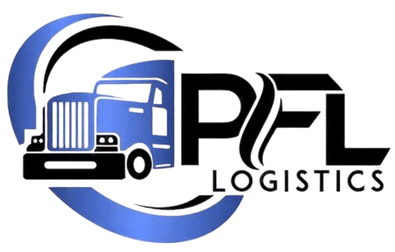Choosing the right mode isn’t just a routing decision—it’s a margin decision. The right mix of parcel, LTL, and FTL can slash surcharges, reduce damages, and improve on‑time performance. Use this guide to match each shipment to the most cost‑effective option (without risking your delivery promises).
Quick comparison
| Mode | Best for | Typical limits | Biggest advantages | Watch‑outs |
|---|---|---|---|---|
| Parcel | Individual boxes, small orders, residential B2C | Up to ~150 lb per package; length ≤108″; length + girth ≤165″ | Fast networks, last‑mile reach, simple claims | Dimensional weight, residential/peak/oversize surcharges |
| LTL (Less‑than‑Truckload) | 1–6 pallets (sometimes up to ~10), 150–15,000 lb | Shared trailer space | Low cost per pallet, broad coverage | More touches (damage risk), accessorials, reweigh/reclass, cubic minimum rules |
| FTL (Full Truckload) | 10–26 pallets, up to ~45,000 lb, tight schedules | Dedicated 53′ trailer | Fast, predictable, minimal handling | Pay for the whole trailer, market rate volatility, detention fees |
Bonus to know: “Volume LTL”/Partial Truckload (PTL) fills the gap between LTL and FTL for ~6–18 pallets or >8–12 linear feet that are too big for standard LTL but don’t need a full trailer.
How carriers really bill you (and where costs creep in)
- Parcel
- Billable weight = max(actual weight, dimensional weight).
- Dimensional weight (inches) ≈ (L × W × H) / DIM divisor (often 139). Right‑size packaging to avoid paying for “air.”
- Common surcharges: residential, delivery area, additional handling (>50 lb or large sides), oversize, Saturday, signature, peak.
- Tip: Validate addresses and flag oversized cartons at order entry.
- LTL
- Priced by class/density, lane, carrier base rate/discount, plus fuel and accessorials.
- Key gotchas: reweigh/reclass fees, limited access/appointment fees, liftgate, inside delivery, residential, redelivery, storage.
- “Cubic minimum” and linear‑feet rules can trigger huge charges on bulky freight even if it’s light.
- Tip: Provide exact dimensions, weight, and NMFC (or density) up front; use standard pallet sizes/heights (no overhang).
- FTL
- Rate ≈ $/mile × loaded miles + fuel + accessorials (detention, layover, driver assist, lumper).
- Influencers: seasonality, equipment type (dry van, reefer, flatbed), pickup/delivery windows, deadhead miles, market imbalance.
- Tip: Reduce dwell and offer flexible windows to become a “shipper of choice” and secure better pricing.
A simple decision framework
Ask these five questions for every shipment:
- How big is it?
- Total weight and pallet count
- Dimensions and linear feet used in the trailer
- Any overhang or irregular sizes?
- How fast must it arrive?
- Exact delivery date? Appointment required? Penalties if late?
- Where is it going?
- Residential vs. commercial
- Liftgate/inside delivery needed?
- Cross‑border clearance needed?
- How delicate or high‑value is it?
- Fragile, temperature‑controlled, or hazmat?
- Tolerance for extra touches?
- What’s the budget window?
- Cost target per order/unit
- Will consolidation delay be acceptable?
Rules of thumb:
- Choose Parcel if each package is within parcel limits and you need last‑mile delivery to many addresses.
- Choose LTL if you have 1–6 pallets to a single consignee and can accept terminal touches.
- Choose FTL if you’re 10+ pallets, have tight ETAs, high value/fragile freight, or your LTL quote triggers cubic/linear feet penalties.
- Consider Partial TL/Volume LTL for 6–18 pallets or >8–12 linear feet that price poorly in standard LTL.
When each mode wins
- Parcel wins when
- Boxes are small/dense and under dimensional thresholds.
- You ship to many residential doors.
- You can zone‑skip: consolidate to LTL into a regional hub, then inject into parcel for last‑mile.
- LTL wins when
- You’re shipping 1–6 pallets to a single consignee.
- Freight is packaged well (no overhang) and reasonably dense.
- You can live with 1–2 extra days vs. FTL.
- FTL wins when
- You need speed and control, minimal handling, or have fragile/high‑value goods.
- LTL quotes show cubic minimum/linear‑feet upcharges.
- You can load 10–26 pallets or use multi‑stop TL more efficiently than multiple LTLs.
Real‑world scenarios (illustrative)
- Many small boxes to one city
- Profile: 120 cartons, 25 lb each, Zone 7–8 average.
- Option A: Ship all parcel → heavy dimensional/oversize + DAS/peak surcharges stack up.
- Option B: Consolidate to 4–5 pallets, send LTL to a local cross‑dock, inject into parcel for last‑mile (zone‑skipping).
- Result: 10–25% savings typical, fewer surcharges, better first‑attempt deliveries.
- The “bulky LTL” trap
- Profile: 8 pallets of lightweight displays, 48″ × 48″ × 70″ each, ~4,000 lb total.
- Standard LTL applies cubic minimum or linear‑feet rules → surprisingly high quote.
- Switch to Partial TL/Volume LTL or full TL if rates are close.
- Result: Often cheaper than LTL with fewer touches; damage risk drops.
- Tight deadline, high value
- Profile: 12 pallets, 22,000 lb, must hit a booked DC appointment tomorrow.
- LTL with guaranteed service is risky/expensive; missed appointments mean fees.
- Book FTL (or team/expedited if needed).
- Result: Higher linehaul than LTL, but lower total landed cost once you avoid appointment misses, chargebacks, and damage.
Note: Rates vary by market, season, and lane. Always compare your actual quotes across modes before locking in.
Cost‑cutting plays that work across all modes
- Package smarter
- Right‑size boxes to cut DIM weight.
- Standardize pallet heights (e.g., ≤50–60″) and avoid overhang.
- Use corner boards, stretch wrap, and blocking/bracing to reduce OS&D claims.
- Eliminate surprise fees
- Validate addresses at order entry; flag residential/limited access.
- Capture special instructions (liftgate, appointment) on the BOL.
- Weigh and measure accurately to prevent reweigh/reclass.
- Consolidate and plan
- Combine orders by region and delivery window.
- Use milk‑runs or pool distribution.
- Try zone‑skipping for B2C peaks.
- Use the middle lane: Partial TL/Volume LTL
- Perfect for 6–18 pallets or >8–12 linear feet.
- Fewer touches than LTL, lower cost than full TL when you don’t need the whole trailer.
- Procure smarter
- Mix contract and spot: lock core lanes, spot the rest.
- Ask LTL carriers for FAK (Freight All Kinds) and cubic‑min waivers on your freight profile.
- Scorecard carriers on OTIF, claims ratio, acceptance, and dwell.
- Leverage tech and data
- TMS rating engine to auto‑shop parcel/LTL/FTL in one screen.
- Real‑time tracking with predictive ETAs to avoid missed appointments.
- Audit invoices to catch accessorial errors; track cost per pound/order/lane.
Back‑of‑napkin calculators
- Parcel billable weight = max(actual lb, (L × W × H in inches) / 139). If billable weight jumps above 50–70 lb, check LTL.
- LTL quick check: If your freight uses >8–12 linear feet or is very bulky/light, compare Volume LTL/PTL or full TL.
- FTL sanity check: Compare LTL total (linehaul + accessorials + risk of damages/late fees) to TL at current $/mile. If within ~10–15%, TL often wins on reliability.
Implementation plan (30/60/90 days)
- 30 days
- Audit last 90 days of parcel surcharges and LTL accessorials.
- Standardize packaging and pallet guidelines; add address validation.
- Turn on multi‑mode rate shopping in your TMS.
- 60 days
- Pilot zone‑skipping on two high‑volume regions.
- Test Partial TL on bulky LTL lanes.
- Negotiate LTL FAK and cubic‑minimum exceptions where your profile fits.
- 90 days
- Lock contract TL on core lanes; set index‑based fuel.
- Build pool distribution for top retail/DC markets.
- Publish a carrier scorecard and trim the bottom performers.
FAQ
- What’s the typical pallet count for LTL vs. FTL?
- LTL: ~1–6 pallets (sometimes up to 10 if dense). FTL: ~24–30 pallets in a 53′ trailer, up to ~45,000 lb.
- When is parcel clearly wrong?
- Oversize/overweight boxes, high DIM, long zones with residential surcharges, or many boxes to one consignee (consolidate instead).
- What about damages?
- FTL has the fewest touches; LTL has more handoffs at terminals. Packaging and correct stacking are critical for LTL.
Put this to work on your freight
We can run a mode‑optimization audit on your last 60–90 days of shipments:
- Identify parcels that should have been LTL, and LTL that should have been Partial TL/FTL.
- Model savings from consolidation, zone‑skipping, and FAK/cubic‑min changes.
- Deliver a lane‑by‑lane playbook with projected cost and service impacts.

